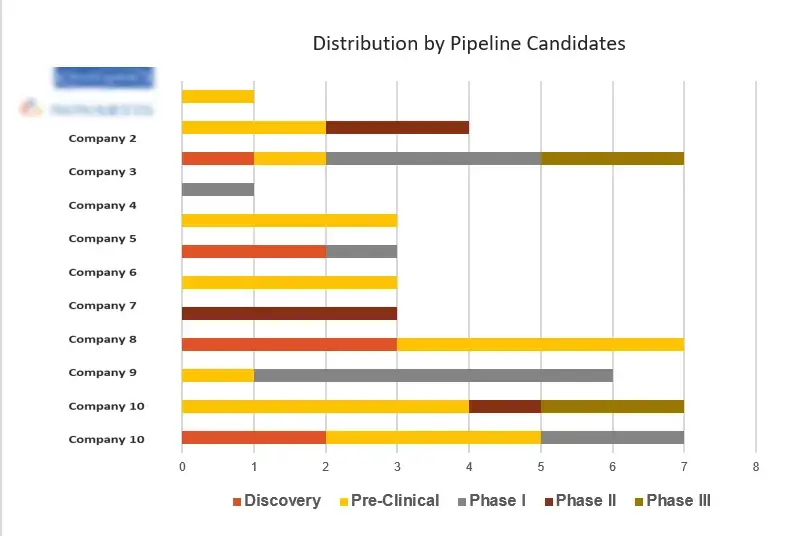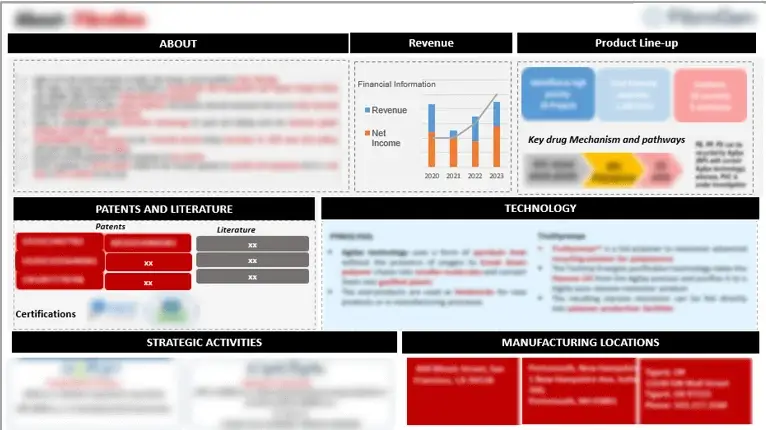Hepatorenal syndrome: Unraveling Dynamics, Advancements, Promising Trends – Market Insight, Clinical Trial, Product Analysis, Patent Analysis, Competitive Analysis and Market Forecast – 2024-2034
Hepatorenal syndrome (HRS) is a critical manifestation of renal failure occurring in patients with advanced chronic liver disease, particularly those with portal hypertension and ascites. Research suggests that approximately 40% of individuals with cirrhosis and ascites will eventually develop HRS during the course of their disease. The historical understanding of HRS dates back to the 19th century when Frerichs and Flint first noted renal function disturbances in liver disease, highlighting oliguria in the absence of proteinuria and linking these abnormalities to systemic circulation issues.
Clinical descriptions in the 1950s by Sherlock, Popper, and Vessin emphasized the functional nature of HRS, its association with systemic circulatory abnormalities, and its poor prognosis. Subsequent research in the following decades revealed that vasoconstriction of the renal circulation and intense systemic arteriolar vasodilatation lead to renal failure in HRS. Remarkably, the kidneys’ histological appearance in HRS remains normal, and renal function often returns to normal following liver transplantation, making HRS a unique pathophysiological disorder.
Several factors contribute to the development of HRS, including dysregulation of the renin-angiotensin-aldosterone system (RAAS), the sympathetic nervous system (SNS), and the role of renal prostaglandins (PGs). Strong associations have been found between spontaneous bacterial peritonitis (SBP) and HRS, as well as the use of vasopressin analogues with volume expanders in managing and preventing HRS. While HRS can occur in acute liver failure, it is predominantly associated with chronic liver disease.
Traditionally, HRS is classified into two types: type 1 and type 2. Type 1 has a rapid onset and is often triggered by various factors, including bacterial infection, gastrointestinal hemorrhage, and excessive response to diuretics. Type 2 is typically spontaneous and progresses more slowly, with refractory ascites as the primary presentation.
Recent advancements have led to the reclassification of HRS into acute kidney injury (HRS-AKI) based on serum creatinine levels. Type 1 HRS is now proposed as HRS-AKI, with defined stages of AKI based on serum creatinine increases.
The treatment landscape for HRS has evolved over time. While numerous medications have shown limited efficacy, the focus has shifted to vasoconstrictors, such as terlipressin, which targets V1 receptors and aids in preventing homeostatic activation of endogenous vasoconstrictors. Liver transplantation remains the ideal treatment, with a potential for partial to complete recovery in 75% of patients

Figure 1 Pathophysiology of HRS
Credits- >>
To strategically position and evaluate competitiveness in the short to mid-long term, a comprehensive grasp of the Hepatorenal Syndrome (HRS) development pipeline is crucial. This involves understanding the evolving landscape, competitor initiatives, and anticipated advancements in the field.

Figure 2 Ongoing Research
Profiles of stakeholders driving advancements in HRS solutions offer insights into financials, product portfolios, and recent innovations in the field.

Figure 3 Company Portfolio
This report investigates patents associated with Hepatorenal Syndrome (HRS), revealing essential innovations and identifying opportunities for enhancements or collaborations within the field.

Figure 4 Top Current Assignees
This HRS report anticipates trends, outlines growth opportunities, and provides key insights into market dynamics, including size, revenue forecasts, and growth potentials.

Figure 5 Market Opportunity Analysis
 Figure 6 Yearly Market Growth, 2016-2024 (USD Billion)
Figure 6 Yearly Market Growth, 2016-2024 (USD Billion)
(Segmented in terms of the financial growth)
This HRS report highlights key market players, providing concise profiles detailing market shares, strengths, weaknesses, and strategic approaches.

Figure 7 SWOT Analysis of the direct competitors
In order to give the most precise estimations and forecasts, Wissen Research uses an extensive and iterative research approach that is focused on reducing deviation. The company blends top-down and bottom-up methodologies for market segmentation and quantitative estimation. In addition, data triangulation, which examines the market from three separate angles, is a recurrent topic present in all of our research studies. Important components of the approach used for all of our studies include the following:
Preliminary data mining
On a wide scale, unprocessed market data is collected. Continuous data filtering makes sure that only verified and authenticated sources are taken into account. Additionally, data is extracted from a wide range of reports in our repository and from a number of reputable premium databases. We gather information from raw material suppliers, distributors, and purchasers to help with this since understanding the entire value chain is crucial for a thorough understanding of the market.
Surveys, technical symposia, and trade magazines are used to gather information on technical concerns and trends. Technical information focusing on white space and freedom of movement is also obtained from an intellectual property standpoint. Additionally, information on the industry’s drivers, constraints, and pricing patterns is obtained. As a result, a variety of original data are included in the material that is then cross-validated and certified with published sources.
Statistical model
We use simulation models to generate our market projections and estimates. Every study receives a special model that is tailored to it. Data for market dynamics, the technology environment, application development, and pricing patterns are gathered and supplied into the model all at once for analysis. The relative relevance of these factors is investigated, and their impact on the forecast period is assessed, using correlation, regression, and time series analysis. The process of market forecasting combines technological analysis with economic strategies, practical business acumen, and subject expertise.
Econometric models are frequently used for short-term forecasting, but technology market models are typically employed for long-term forecasting. These are based on a confluence of the business environment, regulatory environment, economic projection, and technical landscape. In order to develop global estimates, it is preferable to estimate markets from the bottom up by integrating data from key regional markets. This is required to ensure accuracy and a complete comprehension of the subject. Among the variables taken into account for forecasting are:
Regulations and anticipated developments
We give these criteria weights and use weighted average analysis to assess their market influence in order to calculate the anticipated market growth rate.
Primary research | Secondary research |
· Manufacturers · Technology distributors and wholesalers · End-user surveys · Consumer surveys | · Company reports and publications · Government publications · Independent investigations · Economic and demographic data · Online searches · Research reviews · Reference customers |
1.1 Overview of Hepatorenal Syndrome (HRS)
1.1.1 Definition and Classification
1.1.2 Scope of HRS Services
1.1.3 Characteristics and Applications
1.1.4 Current State of Understanding
1.1.5 Key Innovations in HRS Research
1.2 Market Insights and Highlights
2. Market Landscape
2.1 Market Size and Growth Trends, 2023-2033 (USD Million)
2.2 Market Segmentation
2.3 Market Drivers and Challenges
2.4 Regulatory Landscape
3. Patent Analysis
3.1 Top Assignees
3.2 Geography Focus of Top Assignees
3.3 Legal Status
3.4 Assignee Segmentation
3.5 Technology Evolution
3.6 Key Patents
3.7 Patent Trends and Innovations
3.8 Patent Portfolio Analysis of top assignees
4. Clinical Trial Analysis
4.1 Analysis by Trial Registration Year
4.2 Analysis by Phase of Development
4.3 Analysis by Number of Patients Enrolled
4.4 Analysis by Status of Trial
4.5 Analysis by Study Design
4.6 Analysis by Type of Product
4.7 Analysis by Geography
4.8 Analysis by Key Sponsors/Collaborators
5. Global HRS Market Analysis and Forecast
5.1 Market Value Forecast, by Region
5.1.1 North America
5.1.2 Europe
5.1.3 Asia Pacific
5.2 Market Value Forecast, by Treatment
5.2.1 Therapeutics
5.2.2 Liver Transplantation
5.2.3 Surgical Shunting
5.2.4 Renal Replacements Therapy
6. Competitive Landscape
6.1 Benchmarking Parameters
6.2 Scoring of Different Companies
6.3 Top Company Profiles
6.4 Company A
6.5 Company B
6.6 Company C
6.7 Product Portfolio Analysis
6.8 Recent Developments and Strategies
7. Future Outlook and Market Opportunities
7.1 Technological Advancements
7.2 Unmet Needs and Potential Market Gaps
7.3 Market Forecast and Growth Opportunities
8. Conclusion
9. Appendix
9.1 Glossary of Terms
9.2 List of Abbreviations
10. References
S.no | Key Highlights of Report | |
1. | Patent Analysis | · Top Assignee · Geography focus of top Assignees · Assignee Segmentation · Technology Evolution · Key Patents · Application and Issued Trend · Key technology |
2. | Market analysis | · Current Treatment Options · Emerging Therapies and Research Developments (by product analysis and scientific analysis) · Strategic activities · Therapeutic activity of drugs · Company portfolio · Detailed profiles of the key players that are engaged in the development of approved drugs |
3. | Clinical Trials | · Analysis of clinical trial through graphical representation · Coverage of treatments from pre-clinical phases till commercialization (also including terminated and completed studies) |
4. | Forecast | · Detailed comprehension of the historic, current and forecasted trend of market by analysis of impact of these treatments on the market |
5. | Opportunity Analysis | · Technology evolution based on problem solution · Potential licensees · Geography of suppliers · Treatment trends · Unmet needs · SWOT · Drivers and barriers |
6. | KOLs | · A detailed analysis and identification of the key opinion leaders (KOLs), shortlisted based on their contributions |
LIST OF FIGURES
Figure number | Description |
Figure 1 | Terminology of Hepatorenal Syndrome (HRS) Over The Years |
Figure 2 | Hepatorenal Syndrome (HRS)– History and Present |
Figure 3 | Projection of Hepatorenal Syndrome (HRS) till 2033 in different geographies |
Figure 4 | Technology Categorization For Hepatorenal Syndrome (HRS) therapies |
Figure 5 | Recent Technology Trends in Hepatorenal Syndrome (HRS) therapies |
Figure 6 | Technology Evolution in Hepatorenal Syndrome (HRS) therapies |
Figure 7 | Geographical Distribution of Patents of Top Assignees |
Figure 8 | Assignee Segmentation (Companies) |
Figure 9 | Assignee Segmentation (Educational Establishment) |
Figure 10 | Patent Based Key Insights Of xx |
Figure 11 | Patent Based Key insights of xx |
Figure 12 | Patent Based Key insights of xx |
Figure 13 | Geographic Distribution of the Universities/Research Organizations Filling Patents On Various Technology advancements |
Figure 14 | Key Summary Regarding the Patent Filing On Hepatorenal Syndrome (HRS) |
Figure 15 | Product Pipeline of Different therapeutic approaches with Companies Name |
Figure 16 | Portfolio for Government Approved Hepatic medications |
Figure 17 | Key Growth Drivers for Hepatorenal Syndrome (HRS) Market |
Figure 18 | Restraints for Hepatorenal Syndrome (HRS) Market |
Figure 19 | xx Portfolio (Top Player) |
Figure 20 | xx Portfolio (Top Player) |
Figure 21 | xx Portfolio (Top Player) |
Figure 23 | xx Portfolio (Top Player) |
Figure 24 | xx Portfolio (Top Player) |
Figure 25 | xx Portfolio (Start-up) |
Figure 26 | xx Portfolio (Start-up) |
Figure 27 | xx Portfolio (Start-up) |
Figure 28 | Strategic Activities Including Collaboration, Partnerships and Acquisitions |
Figure 29 | Research Methodology for Patent, Selection and Analysis |
LIST OF GRAPHS
Graph number |
Description |
Graph 1 | Problem Solution Analysis |
Graph 2 | Top Assignees in Hepatorenal Syndrome (HRS) treatment therapy |
Graph 3 | Technology Focus of Top Assignees (IPC-CPC Classes) |
Graph 4 | Top Countries of Origin of Patents |
Graph 5 | New entrants in HRS field |
Graph 7 | Legal Status |
Graph 8 | Most Cited Patents |
Graph 9 | Patents with Largest Invention Families |
Graph 10 | Most Claim-Heavy Patents |
Graph 11 | Filing Trends |
Graph 12 | Weighted Scores for Top 64 Players According to Benchmarking Criteria |
Graph 13 | Hepatorenal Syndrome (HRS) (CAGR: 2023-2033) |
Graph 14 | Hepatorenal Syndrome (HRS) Market Share: Distribution by Key Geographical Area, 2023-2033 |
LIST OF TABLES
Table number | Description |
Table 1 | Parameters included and excluded for conducting the analysis |
Table 2 | Technology Classes with Definitions |
Table 3 | Patent Litigation |
Table 4 | Highest Market Valued Patents |
Table 5 | SWOT Analysis of Top 3 Players |
Table 6 | Parameters and their score for Benchmarking |
Table 7 | Weighted scores for top 5 players according to benchmarking criteria |
© Copyright 2024 – Wissen Research All Rights Reserved.